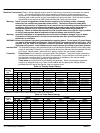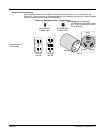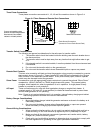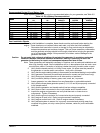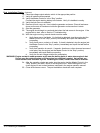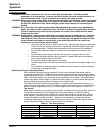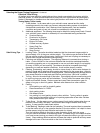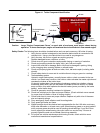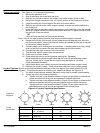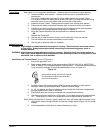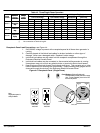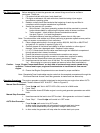
4-2 Operation MN2417
Selecting the Proper Towing Equipment Continued
Electrical Trailer Wiring
All trailers must have taillights, brake lights and turn signals connected to the towing vehicle’s
electrical system. It is also recommended that a heavy duty turn signal flasher and emergency
flasher (if separate) be installed since the trailer lights place an extra load on car flasher units.
Towing Heavy Trailer Loads
1. Trailer brakes. In all cases refer to your vehicle’s owner manual and the trailer
operating manual to be certain you have an adequate braking system to handle the
vehicle/trailer combination. Also, State and local requirements, road and weather
conditions and grade of road, etc. should be considered for trailer braking.
2. Additional equipment. The following items may be helpful for towing heavy loads. Consult
your vehicle’s owner manual or dealership for recommended towing accessories.
a. Overload Springs
b. Overload or air shocks
c. Transmission Oil Cooler
d. Engine Oil Cooler
e. Coolant recovery System
f. Heavy Duty Fan
g. Side View Mirrors
h. Sway Control
Safe Driving Tips 1. Loading Trailer. The trailer should be loaded so that the downward tongue weight is
approximately 10% of the gross vehicle weight. The trailer tongue should be level with
the tow vehicle coupling during towing. Adjust load, hitch and coupling as necessary to
ensure trailer tongue remains level during towing.
2. Following and stopping distance. The stopping distance is increased when towing a
trailer. A rule of thumb for the minimum distance that should be maintained between
you and the preceding car on dry pavement is one car and trailer length (2 car lengths)
for every 10 MPH you are traveling. The distance should be increased accordingly
depending on road and weather conditions. Avoid sudden stops if possible.
3. Passing. Accelerating and passing should be done slowly to allow extra distance for
passing. Signal well in advance when passing and returning to the proper lane. Allow for
the extra length of the trailer before changing lanes. Never change lanes abruptly as this
may cause the trailer to sway and push the tow vehicle into a “jack knife” condition.
4. Turning. Allow for the extra length of the trailer. Drive slightly beyond normal turning point
to avoid running over curbs and soft shoulders. Turning radius increases when towing.
5. Uphill and Downhill Grades. Reduce speed and use a lower transmission gear for
steep or long up or down hill grades. Maintain safe distance from other vehicles.
6. Parking.
S Avoid parking on uphill or downhill grades
S Place transmission in “PARK”
S Apply parking brake.
S Use wheel chocks.
S In a parking lot, avoid parking close to other vehicles. Turning radius is greater
and it may be impossible to get out of a parking space after a few other vehicles
have parked around your vehicle.
7. Trailer Sway. If trailer sway occurs, reduce speed. Apply trailer brakes rather than car
brakes to control sway. See step 1 and ensure trailer tongue remains level during
towing. If sway persists, seek expert advise.
8. Trailer Backing. Backing a trailer can be frustrating. The most important item to remember
is that the trailer will go in the opposite direction of the tow vehicle. It is helpful to have
another person help you back the trailer and watch for objects.
Turn the vehicle’s wheels to the right to make the trailer go left, and vice versa.
Put your hand at the bottom of the steering wheel. The trailer will go in the same direction
your hand moves (moving your hand to the right will cause the trailer to go right, and vice
versa). Sharp steering wheel corrections will cause the trailer to jackknife and may cause
damage to the rear of the tow vehicle or the front of the trailer.



